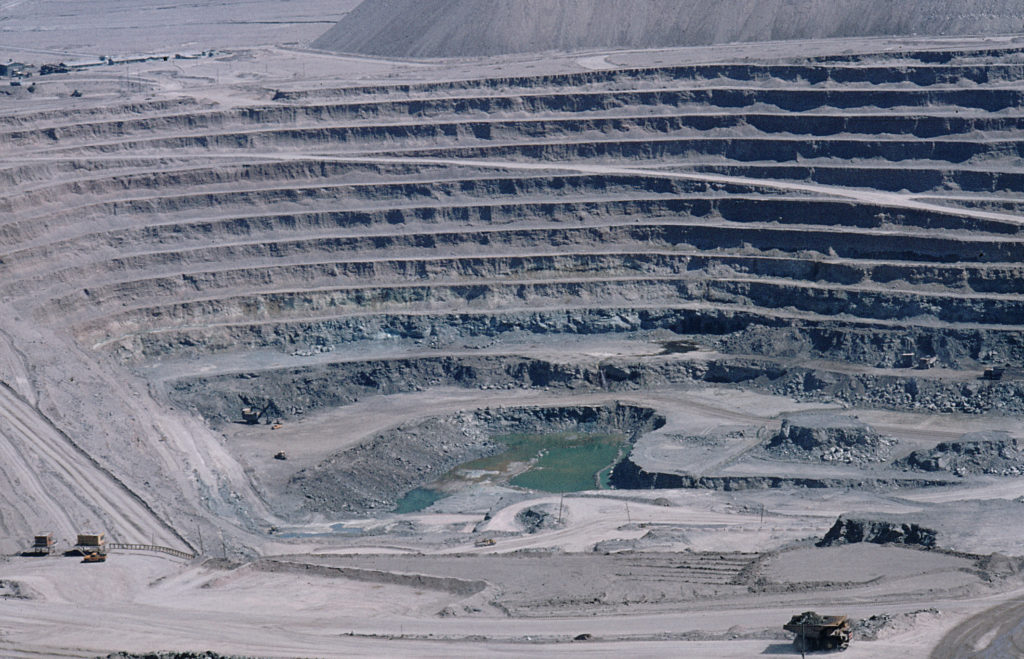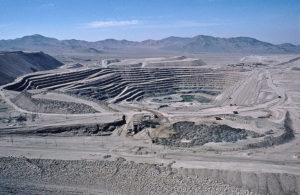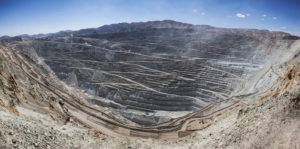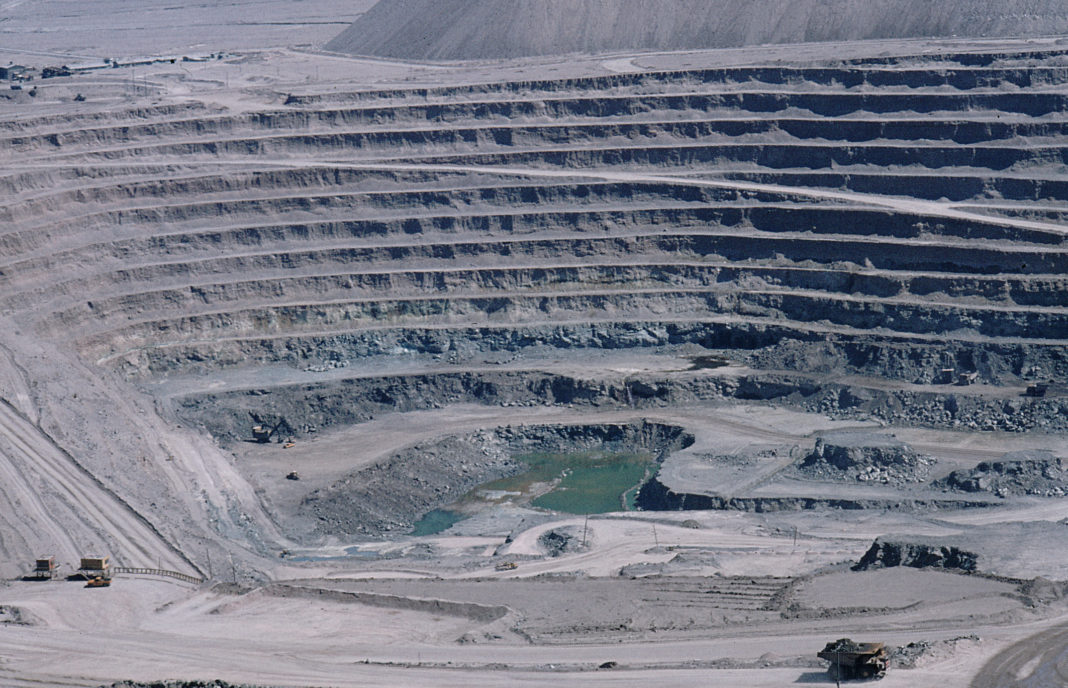Chuquicamata is the largest open-pit copper mine in terms of excavated volume in the world. It is located in the north of Chile, just outside Calama, at 2,850 m above sea level. It is 215 km northeast of Antofagasta and 1,240 km north of the capital, Santiago.

Flotation and smelting facilities were installed in 1952, and expansion of the refining facilities in 1968 made 500,000 tons annual copper production possible in the late 1970s. Previously part of Anaconda Copper, the mine is now owned and operated by Codelco, a Chilean state enterprise, since the Chilean nationalization of copper in the late 1960s and early 1970s. Its depth of 850 meters makes it the second deepest open-pit mine in the world, after Bingham Canyon Mine in Utah, United States.

Despite over 90 years of intensive exploitation, it remains one of the largest known copper resources. Its open pit is the world’s largest at 4.3 km long, 3 km wide, and over 900 m deep, and its smelter and electrolytic refinery (855,000 tonnes p.a.) are amongst the world’s largest. Chuquicamata is also a significant producer of molybdenum.

Chuquicamata is now amalgamated with the operating Radomiro Tomić mine to the north (but still on the same mineralized system), the developing Alejandro Hales mine just to the south (formerly Mansa Mina, a slightly impolite description), and the recently discovered ‘Toki cluster’ of copper porphyries to form the “‘Codelco Norte'” division of Codelco.
According to wikipedia















